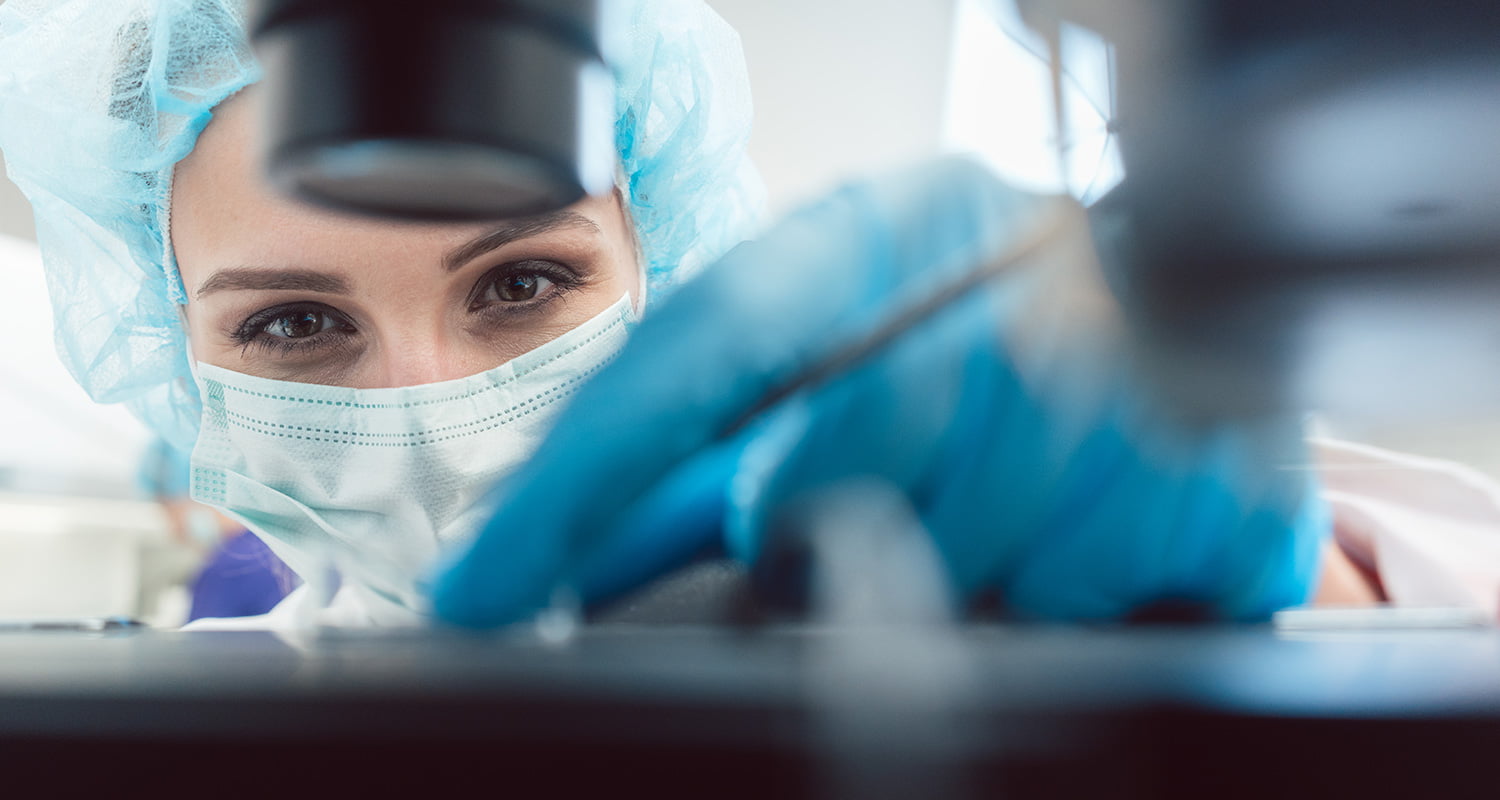
Embryonic development in the PMA laboratory
After a mature oocyte is fertilized by a sperm, the female and male nuclei undergo a process that leads to their fusion. This cell, which we now call a zygote, represents a new genetic entity. After nuclear fusion, cell divisions begin, giving rise to the embryo.
In a natural conception, fertilization and initial embryonic development take place in the fallopian tube. The embryo travels the entire length of the tube while undergoing cell division and remains protected by a glycoprotein layer called the zona pellucida. This journey takes about 5 days until the embryo reaches the uterine cavity. At this point, the embryo is called a blastocyst and is already an entity with some cellular differentiation. It is at this stage that the embryo increases in size and is able to free itself from the zona pellucida, in a process called hatching. The hatched blastocyst can attach itself to the uterine endometrium through the implantation process, giving rise to a pregnancy.
Embryo development after conventional in vitro fertilization (IVF) or intracytoplasmic sperm injection (ICSI) treatment is similar to that which occurs in natural conception, but takes place outside the woman’s body until the moment the embryos are transferred to the uterine cavity.
The environment of the fallopian tubes and uterine cavity promotes embryonic development. In the CETI laboratory, this environment is mimicked through the use of appropriate culture media that provide all the substances necessary for each stage of development, and state-of-the-art incubators that aim to approximate as closely as possible the atmosphere found in the female reproductive system.
During Medically Assisted Reproduction (MAP) treatments, embryonic development is monitored in order to collect information that allows Embryologists to select the embryos with the greatest implantation potential.
Embryonic development in PMA
- Day 0 – day of follicular puncture and oocyte insemination by IVF or microinjection by ICSI
- Day 1 – 16 to 18 hours after insemination or microinjection of the oocytes, fertilization is assessed. At this point, in the case of normal fertilization, two pronuclei (one female and one male) and two polar globules are observed. The oocyte is now called a prezygote . In the hours that follow, the pronuclei will fuse and give rise to a new genetic entity, the zygote .
- Day 2 – cell divisions have already begun and the embryo now has 4 cells. At this stage, the presence of fragmentation (cell cytoplasm excluded during divisions), the presence of multinucleated cells (with more than one nucleus), the size of the cells and other relevant morphological characteristics are assessed. At this point, the embryo is said to be in the cleavage phase .
- Day 3 – cell divisions continue and the embryo should have about 8 cells. The degree of fragmentation, cell size and other relevant morphological characteristics are also assessed. The embryo is still in the cleavage phase .
- Day 4 – the embryo has begun the compaction process, during which the cells form very strong bonds and it is no longer possible to distinguish the cell membrane of each cell. This compaction should include all the cells. The embryo reaches the Morula stage .
- Day 5 to 6 – After compaction, a fluid-filled cavity, the blastocoel, begins to form inside the embryo. This cavity increases in size and it becomes possible to distinguish two types of cells: those on the periphery, called Trophectoderm, and a cohesive group of cells, called Inner Cell Mass. The embryo reaches the Blastocyst stage and the increase in the size of the blastocoel defines its degree of expansion. At this stage, the layer that protects the embryo (the zona pellucida) begins to thin due to the expansion of the embryo and the hatching process can begin. During hatching, the embryo, through contraction and expansion movements, causes a fracture in the zona pellucida. Through this fracture, the blastocyst can be released and continue its expansion process.
The hatching process can occur during development in the laboratory or in the uterine cavity after embryo transfer. The hatched embryo will be able to implant itself in the endometrium.
Embryo assessment tools
- Conventional assessment
In conventional assessment, embryos are removed from the incubator for the shortest possible period and observed under a microscope to assess the morphology of their development. In this case, the embryo is assessed only once a day, to minimize the stress of being removed from the incubator environment, and it is only possible to record the stage it is in at that moment. - Time-lapse
Time-lapse technology applied to the Medically Assisted Reproduction laboratory allows embryos to be observed at regular intervals without having to remove them from the incubator. This technology uses a camera built into the incubator that takes photographs at set intervals, usually every 5 minutes, of all the embryos and in various planes. The photographs are then compiled into a time-lapse video that allows the Embryologist to see the dynamic evolution of the embryo. This technology allows events to be detected that conventional assessment does not allow, associated with the advantage that the embryos do not have to be removed from the incubator for assessment. - Predictive software
With the evolution of time-lapse technology, software for evaluating the videos obtained has also emerged, using artificial intelligence and predictive values to optimize the selection of the embryo with the best implantation potential. The combination of the Embryologist’s assessment and that obtained by the software may allow for a better selection of the embryos to be transferred.
Embryo selection
Each stage of a Medically Assisted Reproduction treatment is important for success and for achieving the main goal of a healthy pregnancy. Although the success of the treatment is not solely in the hands of the professionals who accompany the patients, at each step it is necessary to make decisions by the team of specialists with a view to increasing the likelihood of pregnancy.
One of the most important steps is the selection of embryos with the greatest implantation potential that will be transferred to the patient’s uterus.
The best embryo or the embryo with the greatest implantation potential is a difficult concept to define and is often subject to the subjectivity of the embryologist’s assessment. To assist professionals in this task, efforts have been made to reach a consensus that standardizes embryo evaluation in different laboratories. This consensus, which included the contribution of several experts, defined observation times and evaluation criteria for pre-zygotes, cleavage stage embryos and blastocysts. The experience of the team of embryologists is, in any case, an essential requirement for improving embryo selection.
The most traditional evaluation method, based on the punctual and daily morphological evaluation of embryos, provides little information to embryologists. In this case, the decision of which embryo has the greatest potential is only supported by this punctual evaluation, which may not be sufficient to detect certain events in embryonic development that would be important for its rejection or selection.
For this reason, the CETI laboratory is equipped with incubators with time-lapse technology (GERI and PrimoVision) that assist the embryology team in making decisions regarding the best embryos to transfer.
In addition, and no less important than the use of the most advanced technology, CETI has an experienced Embryology team that is fully certified by the European Society of Human Reproduction and Embryology (ESHRE) .
